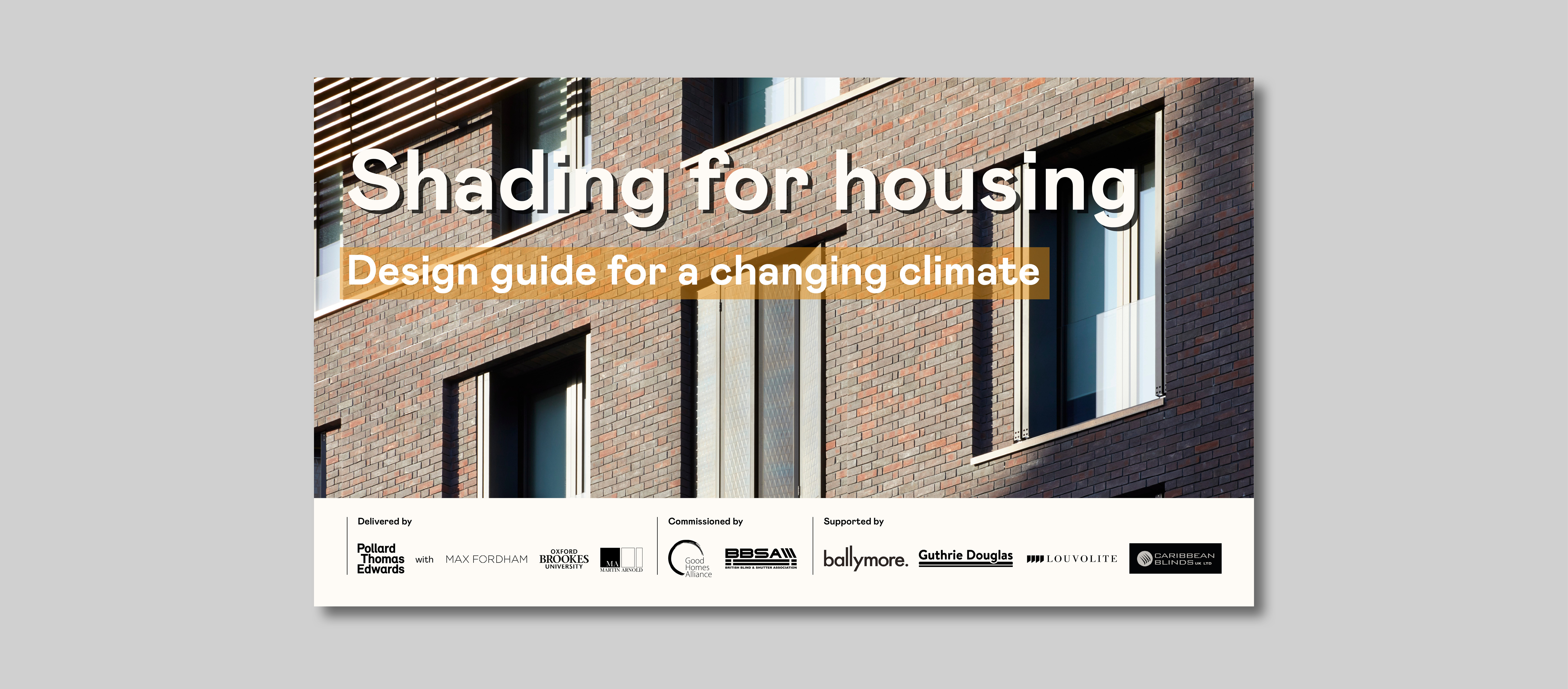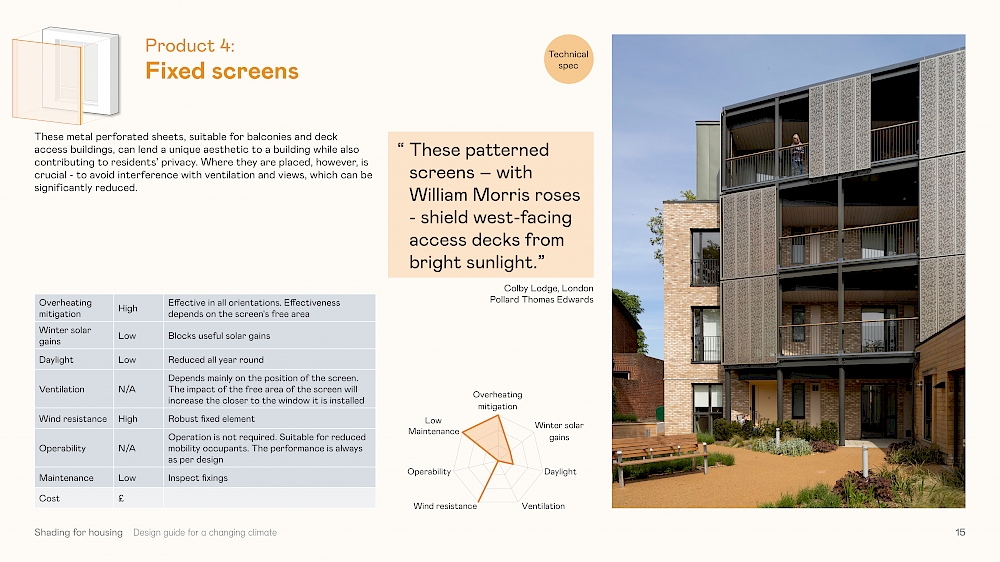
The Good Homes Alliance and British Blind and Shutter Association (BBSA) have launched a new design guide on shading for housing, seeking to embed a new culture – among building makers of all stripes – in which shading is central to a building’s design and built-in from the start.
The work has been led by an experienced team at award-winning architect Pollard Thomas Edwards, including sustainability lead Tom Dollard, author of ‘Designed to Perform’, Passivhaus designer Joseba Perez, and sustainable design specialist Raffaella Corrieri.
The guide was launched at a popular in-person event on 9th November at PTE’s offices at Diespeker Wharf in London, with talks from the wider project team which includes renowned engineering firm Max Fordham; Rajat Gupta, Professor of Sustainable Architecture and Climate Change at Oxford Brookes University, and construction consultants, Martin Arnold.
Why is the guide needed? - Future proofing and climate resilience
As global temperatures continue to rise, so does the risk of buildings overheating. A recent study1 shows that by the middle of the 2030s, 90% of the UK housing stock will suffer from overheating. Simply put, our built environment – designed for dampness, breeze, rain and mild heat – is in no fit state to shelter us from this changing climate.
Currently in the UK, buildings are not required to pass the overheating criteria using future weather files to comply with the Building Regulations. Modelling using predicted future weather data has shown that buildings designed with shading products built-in from the start are less likely to overheat in the future than those that aren’t.
This guide calls for a new design culture in the UK. A design culture in which the everyday specification of shading products on domestic buildings – or the designing for shading from the start – is second nature among developers, housebuilders, architects and consultants.
The public too, buyers and tenants alike, should be well-versed in the benefits that shading products bring, in terms of reduced running costs, improved comfort and general wellbeing. The guide provides a shading ‘cheat sheet’ focused on the practicalities of adapting to holistic shading design.
What is in the guide?
A product section provides detailed information to help users to select the right product for a building’s shading needs. Each product page features a brief description, a table detailing its functionality, an in-situ product photograph, a ‘performance web’ visualising a product’s strengths and weaknesses and, where relevant, an architect’s comment on a product’s added value.
The guide also provides a short history of shading design, explores UK-specific design challenges and wraps up with best practice advice.
The guidance is applicable to both new build and retrofit projects, and aimed at a range of stakeholders including architects, local authorities, planners, housing associations, developers, and policy makers.

Who has supported the guide?
The project has been commissioned by Good Homes Alliance and the British Blind and Shutter Association, and is supported by Ballymore, Caribbean Blinds, Guthrie Douglas and Louvolite.
A steering group of industry experts and stakeholders from across the sector has supported the development of the guide, with representatives from Architype, Greater Cambridge Shared Planning Service, CIBSE, ECD Architects, NDM Heath, OX Place, Sovereign, TOWN and Urban Light Surveyors.





